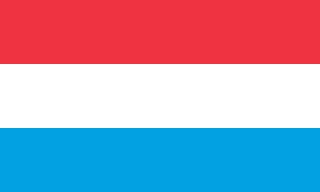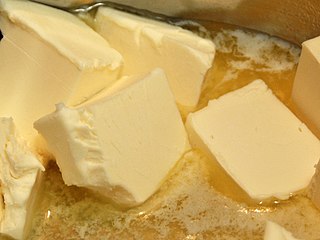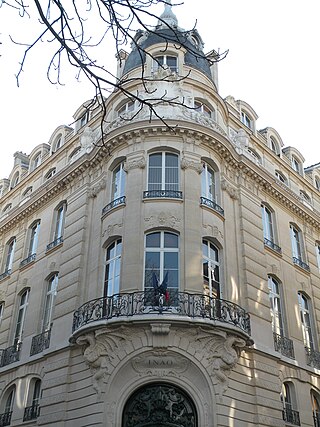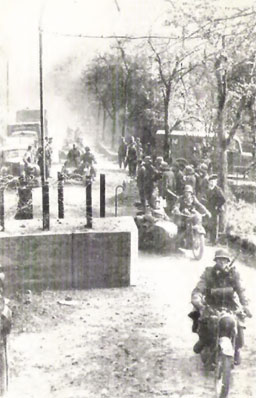
Beurre Rose is a cultured milk butter produced in Luxembourg under the Marque Nationale of the Grand Duchy of Luxembourg. It is sometimes consumed as a spread, but most commonly used as an ingredient in a variety of sweet and savory dishes. [1]

Beurre Rose is a cultured milk butter produced in Luxembourg under the Marque Nationale of the Grand Duchy of Luxembourg. It is sometimes consumed as a spread, but most commonly used as an ingredient in a variety of sweet and savory dishes. [1]
The designation "Beurre de Marque Nationale Luxembourgeois" was established in 1932 by specific legislation. In 1970, the legislation was amended to establish a national protected brand name for Luxembourg butter. [2] It holds a PDO classification in Europe, which it received in 2000. [3]
Its name is derived from the “pink” quality label the Luxembourg state has awarded it for its various properties such as its spreadability and its taste. [4]
Beurre Rose was previously made in the traditional way, but today it is made using continuous churning methods. The butter is checked 15 times a year chemically and organoleptically by sampling. This inspection is carried out in addition to all the usual tests for quality and hygiene that are carried out on all food products. [2] [5]

Luxembourg, officially the Grand Duchy of Luxembourg, is a landlocked country in Western Europe. It is bordered by Belgium to the west and north, Germany to the east, and France to the south. Its capital and most populous city, Luxembourg City, is one of the four institutional seats of the European Union and the seat of several EU institutions, notably the Court of Justice of the European Union, the highest judicial authority. Luxembourg's culture, people, and languages are greatly influenced by its much larger neighbors France and Germany; for example, Luxembourgish, a Germanic language, is the only national language of the Luxembourgish people and of the Grand Duchy of Luxembourg, French is the only language for legislation, and all three – Luxembourgish, German and French – are used for administrative matters in the country.

Butter is a dairy product made from the fat and protein components of churned cream. It is a semi-solid emulsion at room temperature, consisting of approximately 80% butterfat. It is used at room temperature as a spread, melted as a condiment, and used as a fat in baking, sauce-making, pan frying, and other cooking procedures.

The Luxembourg War Cross is a military decoration of Luxembourg. It was created on 17 April 1945 by the Grand Duchess Charlotte of Luxembourg. The War Cross recognizes military service and feats of bravery. The medal is often referred to as the Luxembourg Croix de Guerre as French is one of Luxembourg's three official languages.

In France, the appellation d'origine contrôlée is a label that identifies an agricultural product whose stages of production and processing are carried out in a defined geographical area – the terroir – and using recognized and traditional know-how. The specificity of an AOC product is determined by the combination of a physical and biological environment with established production techniques transmitted within a human community. Together, these give the product its distinctive qualities.
Same-sex marriage has been legal in Luxembourg since 1 January 2015. A bill for the legalisation of same-sex marriages was enacted by the Chamber of Deputies on 18 June 2014 and signed into law by Grand Duke Henri on 4 July. Polling suggests that a majority of Luxembourgers support the legal recognition of same-sex marriage. Luxembourg was the last Benelux country, the tenth in Europe and the sixteenth in the world to allow same-sex couples to marry nationwide.

The Central Bank of Luxembourg is the member of the Eurosystem for Luxembourg and was founded for that purpose in 1998, succeeding the Institut Monétaire Luxembourgeois.

Muslims in Luxembourg are a super-minority together with: Protestants, Orthodox Christians, and Jews. Since 2015, Islam is legally recognized in the country.

The Ministry of Foreign and European Affairs, Defence, Development Cooperation and Foreign Trade, commonly referred to as the Ministry of Foreign Affairs, is a ministry of the government of Luxembourg, which comprises a general secretariat and eight directorates. The ministry is headquartered in the Bâtiment Mansfeld in Luxembourg City.
Luxembourg's cuisine reflects the country's position between the Latin and Germanic countries, influenced by the cuisines of neighbouring France, Belgium and Germany. Recently, it has been influenced by the country's many Italian and Portuguese immigrants. As in Germany, most traditional, everyday Luxembourg dishes are of peasant origin, in contrast to the more sophisticated French fare.

Luxembourgish wine is primarily produced in the southeastern part of the Grand Duchy of Luxembourg, with vineyards overlooking the river Moselle. Along this river, which for 42 km makes up part of the border between Luxembourg and Germany, wine is made in three countries. There is a continuous history of winemaking along Moselle and in Luxembourg going back to Ancient Roman times. Wine production in 2006/07 was 123,652 hectoliter from 1,237 hectares of vineyards. Out of total wine exports of 87,776 hectoliter in 2005/06, 71,726 hectoliter or 82% was exported to nearby Belgium. Exports to Germany were the second largest at 8,168 hectoliter, or 9%, and is to a large extent made up of base wine in bulk for the production of blended Sekt rather than being sold bottled with "Luxembourg" anywhere on the label. Therefore, very little Luxembourgish wine is seen outside Luxembourg and Belgium.
Beurre d’Ardenne is a type of butter made in the Ardenne of Belgium from cow's milk.
Marc Hostert is an official of the Government of Luxembourg who is working at the European Court of Auditors. Active in television and radio media in Luxembourg, he is one of the judges of the RTL Télé Lëtzebuerg television show Success Story. He also appears on the RTL Télé Lëtzebuerg show Kapital and the RTL Radio show Carte Blanche.
The Ministry of Sustainable Development and Infrastructure was a ministry of the Government of Luxembourg. Its head office was in the City of Luxembourg.
The law of Luxembourg is civil law. From the Tenth Century to the Fifteenth Century the law of the Grand Duchy was customary law.

The German invasion of Luxembourg was part of Case Yellow, the German invasion of the Low Countries—Belgium, Luxembourg and the Netherlands—and France during World War II. The battle began on 10 May 1940 and lasted just one day. Facing only light resistance, German troops quickly occupied Luxembourg. The Luxembourgish government, and Grand Duchess Charlotte, managed to escape the country and a government-in-exile was created in London.

The involvement of the Grand Duchy of Luxembourg in World War II began with its invasion by German forces on 10 May 1940 and lasted beyond its liberation by Allied forces in late 1944 and early 1945.

Émile Speller was a Luxembourgish military officer and the commander of the country's Gendarmes and Volunteers Corps during the German invasion of Luxembourg in World War II. He also served as aide-de-camp to several members of the Grand Ducal Family throughout his career and chamberlain of the Grand Ducal court.
The Pot au Beurre River flows through the municipalities of Sainte-Famille-de-l'Île-d'Orléans and Saint-Pierre-de-l'Île-d'Orléans, in the L'Île-d'Orléans Regional County Municipality, in the administrative region of Capitale-Nationale, in the province from Quebec, to Canada.

The Institut Monétaire Luxembourgeois was the central bank of Luxembourg between its creation in 1983 and mid-1998, when its role was taken over by the newly created Central Bank of Luxembourg and Commission de Surveillance du Secteur Financier.